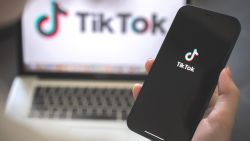Apple warned earlier this year that it would experience a slump in iPhone sales as the coronavirus upends its supply chain and its biggest markets. But so far the impact appears muted.
The tech giant said Thursday that its revenue reached $58.3 billion in the quarter ended in March, a 1% increase from a year earlier. That beat analyst estimates, but fell far short of Apple’s pre-coronavirus guidance of between $63 and $67 billion.
“Despite COVID-19’s unprecedented global impact, we’re proud to report that Apple grew for the quarter,” CEO Tim Cook said in a statement. The jump was driven by an all-time record for revenues from Apple’s services such as Apple Music, Apple TV+ and iCloud, Cook said. Sales from that business line rose nearly 17% from a year earlier to $13.3 billion. Apple also said it set a new quarterly record for sales of its wearable devices.
Apple stock initially jumped 2% in after-hours trading following the earnings report, but then dropped to around 1.5% below its Thursday closing price.
The company began facing the fallout from the coronavirus early on, as the pandemic spread through China, where the bulk of iPhone manufacturing takes place. Apple warned in February that it would miss its previous revenue guidance for the first quarter of 2020. China is also one of the company’s biggest markets, accounting for roughly 15% of its overall revenue.
Apple said sales in the greater China region fell around 7.5% compared to the same quarter last year. International sales accounted for 62% of its revenue for the quarter, it added.
The results come right after the company posted record earnings in the last three months of 2019, spurred by the resurgence of iPhone sales thanks to its latest flagship device, the iPhone 11. And the pandemic hasn’t stopped Apple from continuing to roll out new devices — it launched a new version of its low-cost iPhone SE earlier this month, as well as new models of the iPad and Macbook Air in March.
But investors and users will be watching for updates on the company’s latest flagship line of smartphones, anticipated to be launched this fall and expected to include the first 5G-enabled iPhone.
Apple is also rolling out several new products and features geared specifically at dealing with the pandemic. In March, it rolled out an app for users to screen themselves for coronavirus symptoms, which Cook said has been installed nearly 2 million times. The company is also working with rival Google to develop a contact tracing system that will notify users if they’ve encountered someone who tested positive for the virus.
“This is something Apple has been contending with since January, and I think how we have responded, what we have been inspired to do, tells an important story about Apple’s great durability as a business and the enduring importance of our products,” Cook said, adding that Apple was on track for another record quarter five weeks into the year before the pandemic spread.
He also touted the company’s efforts to source and distribute medical equipment, including more than 30 million respirator masks and more than 7.5 million face shields. Apple continues to distribute more than a million face shields every week.
“This may not have been the quarter it could have been absent this pandemic, but I don’t think I can recall a quarter where I’ve been prouder of what we do or how we do it,” Cook added.
Apple acknowledged that a lot of uncertainty remains, saying it will not release earnings guidance for the next quarter. But Cook said the company’s production was “back at typical levels” by the end of March.


























